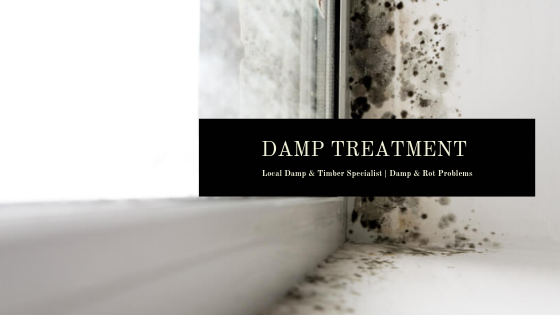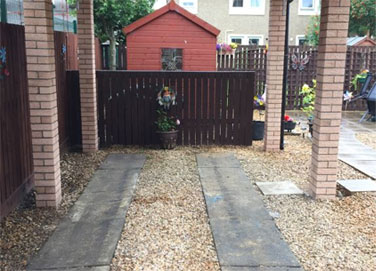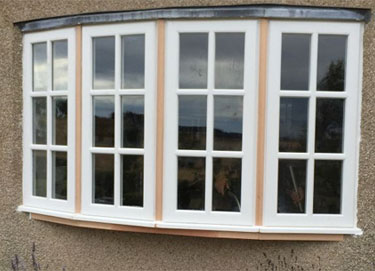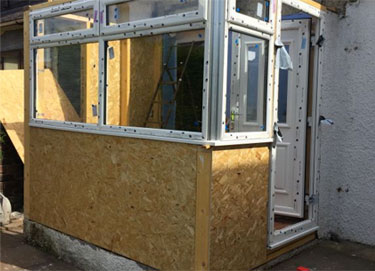Damp Treatment – How To Identify, Repair and Protect Against Damp at Home.
Damp is one of the last things we want to face at home.
It doesn’t matter if we’re a homeowner or a renter, it’s not a good thing. It can make a room feel cold, unwelcoming and unhealthy, and at worst it can mean structural or weatherproofing issues.
Luckily, damp can often be treated and prevented without calling in the professionals. There are also easy signs to keep an eye out for that might indicate a problem, and simple things you can try to stop it from appearing.
In this guide, we’ll walk you through the process of identifying a damp problem and finding out its cause and suggest how to repair and fix it so that you can enjoy your living space once again.
Related content:
Damp Proofing Specialist Edinburgh
How To Know When You Have Damp
You’ll probably be able to see or smell whether you have damp in the winter, but you can look for warning signs at any time of year. Check the following:
- Walls – Hold your hand against the wall, does it feel very cold or damp? Look for signs of mould or fungal growth which will appear as black speckled marks or grey growths on painted walls, woodwork and wallpaper. Flaking paint or curling wallpaper can also be a sign.
- Ceilings – As well as looking for signs of mould, pay close attention to the colour of the ceiling. Is it discoloured or stained in areas? Brown patches in the external corners and near chimney breasts can be damp.

- Windows – Condensation on windows in the morning, along with small puddles of water along windowsills, can indicate high moisture levels within your house. This can be both a cause, or symptom, of damp. Black mould may also develop on wooden and PVC window frames, and silicone sealant used around the edge of frames.
- Bathrooms and kitchens – Look at the grouting and sealant for signs of black mould. Check around window frames and on ceilings for similar damage. Look inside cabinets and cupboards to see if there are any areas of staining and mould growth and pay attention to musty smells.
- Furniture and soft furnishings – Black mould can grow on the inside of curtains, blinds and on upholstered surfaces such as sofas. Check the back of furniture for specks of mould and also for cloudy condensation on wooden and plastic surfaces.
- Basements and unheated storage spaces – A musty, damp smell is likely to be first indicator of a problem here. Whilst you’re down there, check for staining and mould on painted walls and woodwork.
What Causes Damp?
In most homes, damp is caused by one of the following issues:
Poor Ventilation
Related content:
Why does this happen?
Moisture is generated in any house – through washing, cooking, drying laundry and even breathing.
To keep your home feeling dry and comfortable, moist air needs a way to escape the building. If it can’t escape, it builds up within the home creating condensation.
The way homes have been built and renovated in the past has made it more difficult for any moisture to leave the building.
This can happen in modern buildings, which are often well insulated and designed to keep warm air in, but don’t provide sufficient escape routes for moisture. It can also occur in older properties where the addition of new insulation, windows or doors has blocked or disrupted escape routes.
What are the signs to look out for?
Condensation on windows, cold walls and surfaces (such as tiles) and a cool, damp feeling within your home.
How to fix this
Reduce condensation, repair and prevent further damage from moisture.
Penetrating Damp
Why does this happen?
Sometimes the weatherproofing of a building can let you down.
Common causes include leaking roofs (from broken or loose tiles, or damaged flashing on older buildings), leaking gutters (where the gutter has come loose or is blocked with leaves and debris) or damaged and deteriorating mortar, render or pebbledash on exterior walls.
What are the signs to look out for?
The sudden appearance of a damp patch (that often looks like a brown stain) on the inside of an exterior wall, in the upper corners of a room, on a ceiling or near a chimney breast.
How to fix this
Find out the source of the problem and make repairs to prevent further water ingress. We have a number of guides that can help, or you can get a professional in to sort this for you.
Leaking Plumbing
Why does this happen?
If your plumbing is old or loose it can cause the hot or cold water supply to leak.
There could also be a problem with waste water or central heating pipework that can cause anything from gushing water to a slow trickle of damp.
What are the signs to look out for?
Similar to penetrating damp, this damp appears away from the external walls and corners of a room as a growing damp patch. It’s mostly likely to occur on a ceiling or beneath a radiator or sink.
How to fix this
Start by fixing the cause of the problem
Rising Damp
Why does this happen?
Rising damp usually occurs in older homes (early 20th century or older). In modern properties, damp-proof courses are built into the footings and foundations of a home.
Related content:
These help to provide a barrier between the moist soil below the house, and the habitable areas above.
In older properties however, damp-proof courses may be less substantial or not part of the construction.
This means that brick walls can absorb moisture from the ground below, allowing damp to rise into the floors above.
The addition of modern plaster, insulation, windows and doors in more recent years may also have weakened the building’s ability to breathe, trapping moisture in the walls.
What are the signs to look out for?
Cold, damp surfaces and mould growth in the external corners of ground-floor rooms. Cold walls and floors, as well as a musty smell.
How to fix this
For homes with considerable rising damp, installing a modern damp-proof course is the best solution.
Whilst this can be an expensive option, it will help to prevent any further deterioration of the building and reduce the need for preventative measures in future.
Consult an expert to find out the best option for your home and budget. Where symptoms are milder, rising damp can be managed in a similar way to issues caused by condensation.
How To Prevent Mould and Damp
Keep on top of outdoor home maintenance
Prevention is better than cure when it comes to damp problems. Check your roof regularly for damage, especially after stormy weather.
Keep gutters clear and fix or replace as soon as any damage occurs.
Inspect the pointing of exterior brickwork, and if you have any concerns about crumbling mortar speak to a professional to investigate repairs.
Related content:
PVC Guttering Replacement Fife
Roofing Problems That Occur – Improper Maintenance
Keep the home warm
Condensation occurs when warm, moist air touches a cold surface like a chilly windowpane or a cold external wall.Loft and wall insulation can help create warmer spaces, and properly fitted double-glazing will help to avoid misty windows as the inner panel of glass is insulated against the cold air outdoors.
Make sure your home is well-ventilated
Providing a route for moisture to escape from your home will help to minimise condensation.
Double-check that washing machines and tumble dryers are plumbed in and vented correctly. Install an extractor fan in bathrooms and kitchens if one isn’t already in place, and make sure that it’s set to run for a long enough period of time to clear moisture from your room.
Open windows when possible – newer window frames may allow you to open windows just a chink and then lock in place. This is especially important during the colder months when we spend more time indoors.
How To Repair Damaged Caused My Damp
Damp or mould stains on painted walls and ceilings
If you’ve been dealing with damp, we know it can be a real hassle and the last thing you want to be left with once the problem is fixed is unsightly stains on your wall or ceiling.
Once the source of the damp has been fixed, allow the area to thoroughly dry out using a dehumidifier if needed.
Then, treat the surface with a mould removing treatment following the instructions on the packaging carefully.
Once the surface is free of mould and dry, it can be painted with a damp seal or stain blocker paint which will ensure that the staining does not bleed through the emulsion once completed. Once dry, touch up with the same paint used elsewhere on the wall or ceiling.
Mouldy grout and sealant in the bathroom or around sinks
If the grout and sealant is in good condition, begin with a mould removing treatment. Following the instructions on the packaging, remove as much of the mould as possible.
This may be enough to revive the area. However, if it doesn’t fully remove mould stains from silicone sealant, allow the area to dry thoroughly and then cut the old sealant away with a knife blade. Using a mould-resistant sealant and sealant gun, re-seal the affected area and wait until the sealant has cured before allowing the area to get wet.
Top tip
Many mould removing products contain bleach. Whilst this is very effective at destroying mould, it can damage fabrics and painted surfaces. Wear old clothes, eye protection and a mask when using.
Next Steps
If you have dampness in your property that you need repaired, get in touch with us today. Our surveyor will attend your property and discuss the relevant steps needed.





